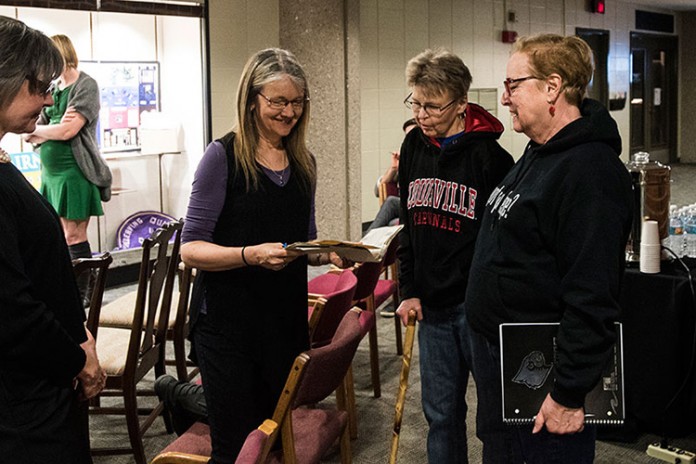
Greg Bourke came out while he was an undergraduate in the College of Arts & Sciences at UofL. But only to himself – it was 1976 and still illegal to be gay. It wasn’t until 2003 that the Supreme Court reversed its 1986 decision and invalidated sodomy laws nationwide, eliminating a major barrier to gay sexual expression.
But in the spring of 1976, being gay “was not the kind of thing you could say you were proud of,” Bourke said. “There was no safe place on campus or movement, there was not a sense that you could talk openly and that you would be welcomed.”
Bourke now works at Humana and is also an advocate for lesbian-gay-bisexual-transgender-queer (LGBTQ) rights and founding member of UofL’s LGBTQ Alumni Association. He and husband Michael DeLeon were plaintiffs in the 2015 landmark Supreme Court case Obergefell vs. Hodges, which ultimately granted same-sex couples the right to marry.
Bourke’s story is one of many that is now part of the Kentucky LGBTQ Heritage Project. The project, led by the Fairness Campaign, is a collaborative effort between UofL’s College of Arts & Sciences’ Anne Braden Institute for Social Justice Research, the Williams-Nichols Collection in UofL’s Special Collections, the Kentucky Heritage Council, State Historic Preservation Office, and Preservation Louisville.
Professor Cate Fosl (Women’s & Gender Studies, and director of the Anne Braden Institute) is research director on the project, working with a group that includes Professor Dan Vivian (History) and a team of student researchers. They are composing a historical context narrative for the project that will act as the key in identifying places of LGBTQ significance in the state, as well as amending two National Register of Historic Places sites in Louisville that housed two of the state’s earliest gay bars.
The first step in writing a narrative of LGBTQ life in Kentucky were three “history harvests” held in Hindman, Lexington, and Louisville. At the events, Fosl, graduate student Wes Cunningham (History) and undergraduate Kayla Reddington (History) collected memorabilia, documents, and oral histories from LGBTQ Kentuckians and their friends in an effort to understand more about 20th century life in Kentucky.
“You can’t find out about the places without finding out about the people,” Fosl said. “This is the first step in documenting and lifting up LGBTQ heritage in Kentucky.”
One of the goals of the project is to develop a statewide inventory of landmarks in the LGBTQ community where historical markers can be installed, or already existing markers can be amended. Preservation Louisville and the Fairness Campaign applied for the grant from the National Park Service and U.S. Department of the Interior.
Kentucky is one of only two states awarded the grant. The other was given to New York, which received the first LGBTQ historic designation last year at The Stonewall Inn in Greenwich Village. The National Register of Historic Places is focusing on underrepresented communities that need to be better represented in the national register, according to Fairness Campaign Director Chris Hartman.
The historical context narrative being crafted by Fosl and her team will focus on places significant to LGBTQ heritage across the Commonwealth of Kentucky, including the two NRHP sites in downtown Louisville – the Henry Clay Building on South Third Street and Whiskey Row on Main Street. The Henry Clay housed the Beaux Arts Cocktail Lounge, which was gay “friendly” if not strictly gay, from the 1940s through 1955, and The Downtowner, then thought of as the gay bar in Louisville, which opened in Whiskey Row in 1975, according to Vivian.
“These kinds of establishments were really important, it was the difference between loneliness and isolation, and a community,” Vivian said. “There is a story worth recognizing here.”
Photo by Tom Fougerousse






























